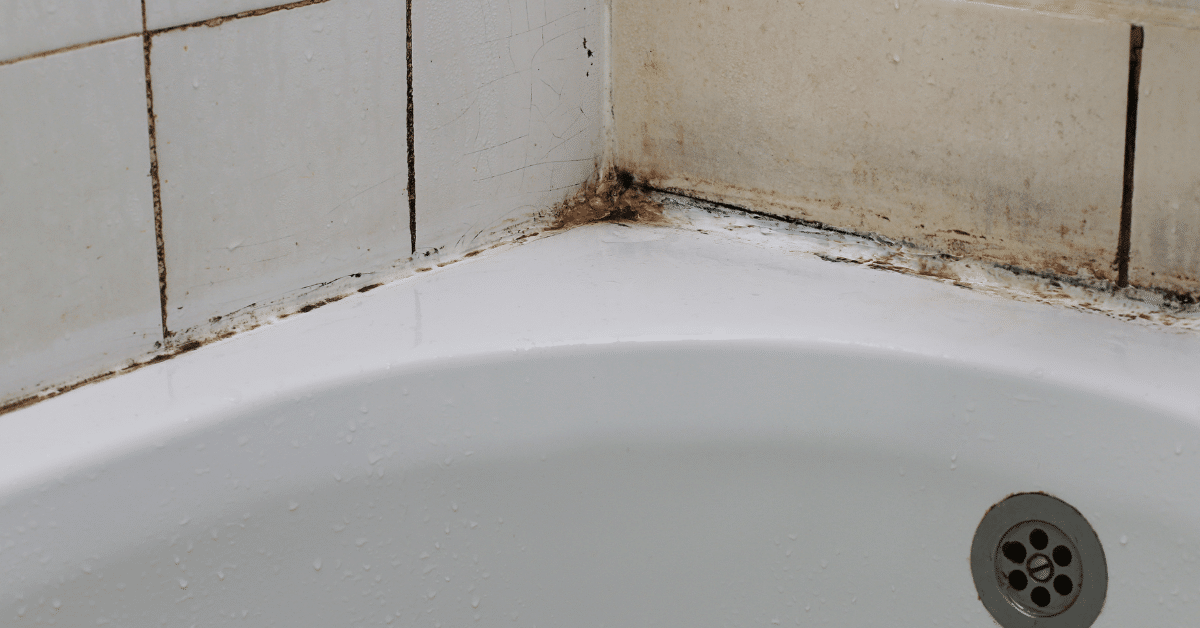Introduction:
Black mold in the shower is a persistent and unsightly issue that can plague any bathroom. Its presence not only diminishes the visual appeal of your space but can also pose potential health risks.
This comprehensive guide is designed to equip you with the knowledge and tools needed to identify, remove, and prevent black mold growth in your shower.
Whether you’re dealing with a small spot or a more extensive infestation, these detailed steps will empower you to tackle the problem effectively and regain a clean, healthy bathroom environment.
I. Identifying Black Mold:
Black mold, scientifically known as Stachybotrys chartarum, thrives in damp, humid environments, making the shower an ideal breeding ground. Begin by conducting a thorough visual inspection, paying close attention to common areas such as tile grout, corners, and shower curtains.
Mold is typically characterized by its dark, slimy appearance. Additionally, trust your sense of smell; a musty or earthy odor may indicate the presence of mold. Keep an eye out for health symptoms like respiratory issues, as these may be signs of mold exposure.
II. Gathering Supplies:
Before diving into the cleaning process, it’s crucial to gather the necessary supplies. Equip yourself with protective gear, including sturdy gloves, a high-quality mask, and protective goggles.
Choose cleaning agents wisely, opting for mold-specific cleaners for non-porous surfaces and considering natural alternatives like vinegar, baking soda, and hydrogen peroxide for porous surfaces.
Don’t forget essential tools such as a reliable scrub brush, an old toothbrush for hard-to-reach areas, and a spray bottle for efficient application.
III. Preparing the Area:
Proper preparation is key to a successful mold removal process. Ensure adequate ventilation by opening windows and using fans to circulate air.
Contain the affected area by sealing it off with plastic sheets, and cover nearby items to protect them during the cleaning process.
Turn off water sources to the shower and cover drains to prevent cleaning agents from entering the plumbing system.
IV. Cleaning Process:
Begin the cleaning process by dry brushing the affected areas to remove loose mold. Apply the chosen cleaning agents, using mold-specific cleaners on non-porous surfaces and natural alternatives like vinegar or hydrogen peroxide on porous surfaces.
Agitate the mold with a sturdy scrub brush or an old toothbrush for intricate areas. Thoroughly rinse the surfaces and ensure complete drying to prevent regrowth.
V. Prevention Strategies:
To prevent the return of black mold, establish a regular cleaning schedule. Aim to clean your shower weekly to prevent the buildup of moisture and mold.
Improve ventilation in the bathroom by using exhaust fans during and after showers, and consider leaving the bathroom door open to allow air circulation.
Promptly address any leaks in the shower or plumbing system, and if necessary, install a dehumidifier to maintain optimal humidity levels.
VI. When to Seek Professional Help:
While the steps outlined in this guide are effective for most cases, there are instances where professional assistance is warranted.
If the mold infestation is extensive, if health concerns arise, if there’s structural damage, or if you cannot identify the source of moisture, it’s advisable to consult with a professional mold remediation service.
They have the expertise and tools to assess and address more severe cases.
FAQs:
Q1: Can I use regular household cleaners to remove black mold?
A: While some household cleaners may be effective, it’s recommended to use mold-specific cleaners for optimal results. These are specifically formulated to target and eliminate mold.
Q2: How often should I clean my shower to prevent mold growth?
A: Aim for a weekly cleaning routine to prevent the buildup of moisture and mold. Consistent cleaning is essential for maintaining a healthy bathroom environment.
Q3: Is black mold dangerous to my health?
A: Yes, exposure to black mold can cause respiratory issues, allergic reactions, and other health concerns. Prompt removal is crucial to ensure a safe living environment.
Q4: What should I do if the mold keeps coming back?
A: Reevaluate your cleaning routine and ventilation practices. Consider using a dehumidifier to control moisture levels, and address any underlying leaks promptly. If the issue persists, it may be advisable to seek professional assistance for a thorough assessment and remediation.
Conclusion:
Maintaining a mold-free shower requires diligence and a proactive approach. By following the outlined steps and adopting preventive measures, you can create a healthier and more pleasant bathroom environment. Remember, consistent maintenance is key to a clean and mold-free space. Addressing mold promptly not only enhances the aesthetics of your bathroom but also safeguards your well-being and the structural integrity of your home.

A group of home improvement enthusiasts and bathroom design experts, combines in-depth knowledge and a shared passion to deliver engaging, informative content that guides readers through the world of bathroom innovation and style.

Leave a Reply